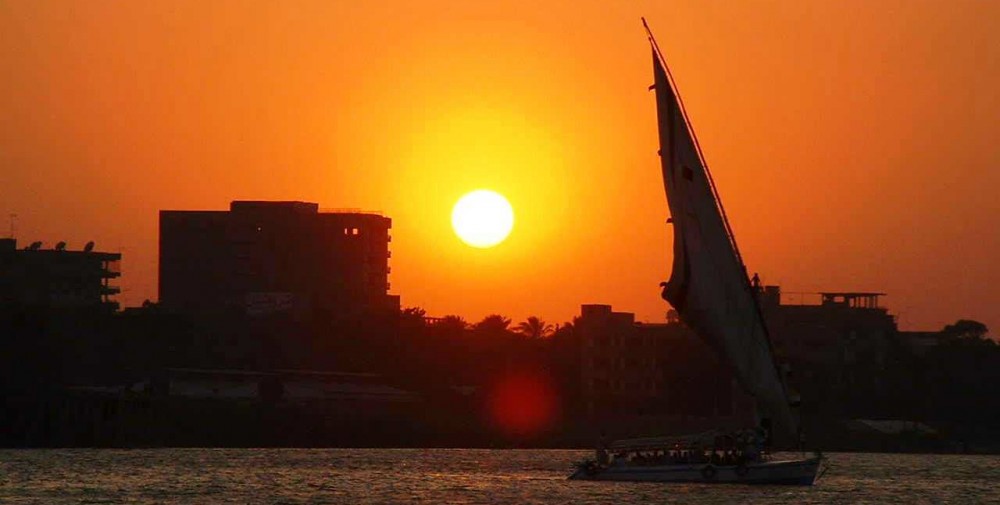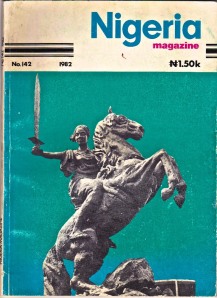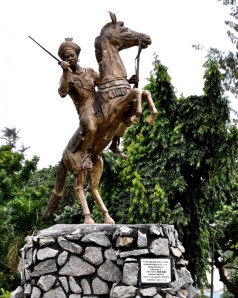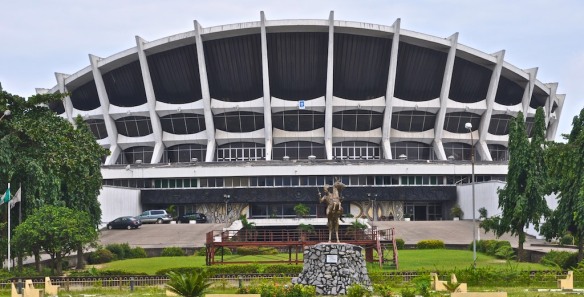
National Arts Theatre and Queen Amina statue (August 2014)
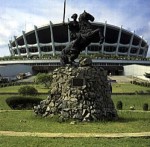
National Arts Theatre and Queen Amina (original statue
by Ben Ekanem)
-photo from Wikipedia
“The labours of our heroes shall never go in vain.” – Nigerian national anthem
Monumental figures and heroic sculptures add a fascinating aspect to any city. Firstly, they represent time-honored stories but also, someone, at some point in time, recognized that that story needed to be visible to the public. As tearing a page from a history book and left by the side of the road, statues challenge the onlooker to puzzle together person, deed, event and era.
Then, there is the back story as to how the statue came into the public space. Deemed important to reinforce past heroic accomplishments for future generations, someone found funds to commission an artist or to buy the monument. Consider the planning and decisions that are made on a governmental levels before space is allocated and the sculpture is erected. But all in all, the worth of statues in public places far exceeds none as statues are visible reminders that ordinary men and women do extraordinary things and that these deeds influenced thought and changed society.
In Nigeria, monuments, landmarks and heroic statues can be seen though they may go unnoticed. However, two iconic landmarks, the National Arts Theatre and the equestrian statue of Queen Amina are highly visible along one of the main arteries to Lagos Island. They have shared this vantage point over the last thirty-seven years. There have been years of neglect but suffice to say, these treasured landmarks have stood in commemoration of personages and events that emphasized the ideals of this nation.

Varna Palace of Sports and Culture, Bulgaria. photo credit
Construction to build the National Art Theatre began in 1973 under General Yakubu Gowon’s regime. Completed in 1975 and fashioned after the Palace of Culture and Sports in Varna, Bulgaria, the Theatre is the work ofTechnoexportsroy, a Bulgarian company. The Theatre was opened formally by the then Head of State, General Olusegun Obasango, in September 30, 1976, just in time for FESTAC 77.
Over three decades, the National Arts Theatre was the place to see a host of multifarious performances including talks by world leaders such as President Jimmy Carter, but its most noteworthy and memorable event was for the 2nd Black African Festival of Arts and Culture (FESTAC) in 1977.
The Queen Amina statue, a work by one of Nigeria’s most prominent sculptors, Ben Ekanem was erected sometime after 1977. This emblematic heroic sculpture in the extensive gardens of the National Art Theatre could not be missed as it greeted arriving guests at the main entrance. With the magnificent backdrop of the Theatre, the powerful female symbol riding her muscular steed represented anticipation of Nigeria’s great future.
The statue symbolizes valor and Ekanem depicts Queen Amina’s (in Hausa, Aminatu) agility and superiority as a female Muslim warrior who ruled north central Nigeria around the 16th century. Unfortunately Ekanem’s notable statue has disappeared and was replaced in March 2014 by an unsigned, unremarkable equestrian statue of Queen Amina.
